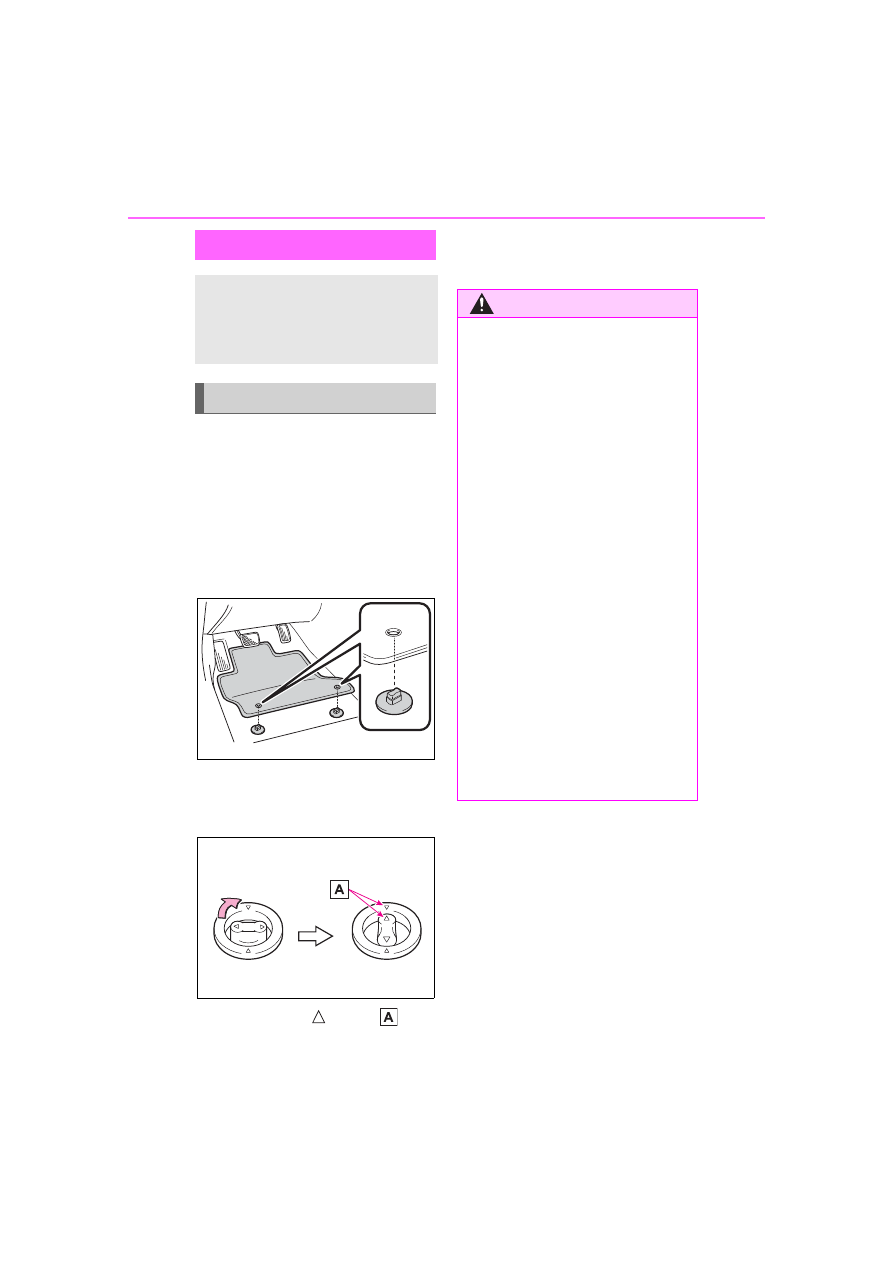Toyota Corolla (2020 year). Owner's manual - part 2

22
1-1. For safe use
1-1.For safe use
Use only floor mats designed
specifically for vehicles of the
same model and model year as
your vehicle. Fix them securely
in place onto the carpet.
1
Insert the retaining hooks
(clips) into the floor mat eye-
lets.
2
Turn the upper knob of each
retaining hook (clip) to secure
the floor mats in place.
Always align the
marks
.
The shape of the retaining hooks
(clips) may differ from that shown in
the illustration.
Before driving
Observe the following
before starting off in the
vehicle to ensure safety of
driving.
Floor mat
WARNING
Observe the following precau-
tions.
Failure to do so may cause the
driver’s floor mat to slip, possibly
interfering with the pedals while
driving. An unexpectedly high
speed may result or it may
become difficult to stop the vehi-
cle. This could lead to an acci-
dent, resulting in death or serious
injury.
■
When installing the driver’s
floor mat
●
Do not use floor mats designed
for other models or different
model year vehicles, even if
they are Toyota Genuine floor
mats.
●
Only use floor mats designed
for the driver’s seat.
●
Always install the floor mat
securely using the retaining
hooks (clips) provided.
●
Do not use two or more floor
mats on top of each other.
●
Do not place the floor mat bot-
tom-side up or upside-down.